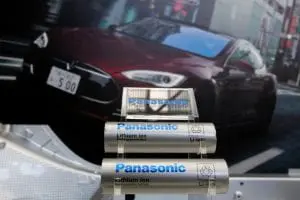This was so very Tesla. More than three years after the Model 3 electric car was first unveiled, we are gathered at a private track north of Sydney for the first test drive in Australia, being briefed by a Tesla executive who can’t be named.
Tesla has a rule, or should we say a quirk, which is that no one – apart from co-founder and CEO Elon Musk – can be quoted by name. But if anonymity rules for the staff, it is the opposite for its CEO and its products.
Tesla enthusiasts put up with such idiosyncrasies – as they do with changing time-lines, inclusions and pricing – without complaining, much. Once you drive one of their cars, you understand why. You are hooked. Petrol and diesel cars seem so passe. So noisy. So polluting. So costly to run. And they don’t drive nearly as well.
The Model 3 has been one of the most anticipated cars in the history of the automotive industry, and without doubt the most anticipated electric vehicle.
Thousands in Australia, and nearly half a million around the world, paid a $US1,000 deposit, without so much as seeing the detailed design, let alone sit in one or take one for a test drive. They are configuring their vehicles online. Most have never seen one.
Why do they do this? Because they were, and are, inspired by Musk’s vision, the technology, the anticipated performance and the promised safety – all of which has been delivered, by the way – and the significance of its role in cementing the transition from fossil fuels to a zero emissions electric future.
The Model 3 was supposed to be a $US35,000 “mass market” car, or $A50,000 in rough terms in Australian dollars at the time. But Tesla couldn’t help itself, and the performance (PD) models that we test-drove briefly on Tuesday are around $100,000 once they are on the road.
The cheapest version of the Model 3, the standard range plus, starts at $66,000 plus on road costs. That’s more than the recently released Hyundai Kona (around $60,000 plus), the Ioniq ($50,000 plus), and the Nissan Leaf ($50,000 plus).
But this is in a different league. The price may not be mass market, but it sales indicate otherwise. It has out-sold all its luxury competitors in the US, put together, and is by far the leading EV in Europe on sales volumes.
 For this Australia-first test drive, the assembled auto media was provided with those top-of-the-range performance models to do four laps around a windy 5km track. Whoever built this track sure does like corners.
For this Australia-first test drive, the assembled auto media was provided with those top-of-the-range performance models to do four laps around a windy 5km track. Whoever built this track sure does like corners.
And those auto journalists must have early deadlines, because this felt more like a race than a casual and exploratory drive. First impressions? It was just enough time to realise that this is a truly amazing car – extraordinary acceleration, great handling, and a ground-breaker in design terms in so many ways.
You don’t get a great feel for the whole package in just 15 minutes, particularly an electric car, because it is about so much more than raw performance. It is also about the significant environmental savings, the fact that you charge the car (mostly at home), rather than re-fuel it, and because it is a step change in mobility.
But for the performance that can be measured in a 20km drive as fast as you dare, or are capable of, then it ticks all the boxes.
The performance model has a top speed of 261km and acceleration from 0-100km in 3.4 seconds. Unlike others, I only got around half way to the former, and didn’t really measure how close I got to the second. Suffice to say it was damn responsive. It has a range of 560km, but we didn’t have time to test that.
It handled, like most EVs, beautifully through the corners. The weight of the batteries gives it a low centre of gravity. The electric motor gives it instant torque, from zero up. There’s other auto-nerdy stuff that makes it really special.
Regeneration delivers an added experience in electric vehicles, meaning you don’t need to use brakes as much, or at all. This is a key aspect of EV driving.
Curiously, because the battery in my Model 3 PD was nearly fully charged, the re-gen was not coming in as much as it would have with a lesser charged battery.
The Tesla boffins say they see no need to put charge back into a battery that is nearly fully charged. That meant I was using the brake pedal more than I expected. Once the regen did come into effect, it felt good. Very good.
Luckily, and perhaps because I do have a standard range plus version on order, I also got to do two laps in one of those. (The blue one below) Here, the top speed is 225km and acceleration from 0-100 takes nearly double the time of the PD version, 5.6 seconds. The range is 460km.
My best advice? Drive the SR plus before the PD.
 The SR plus is definitely shaded by the better performance of the performance version, as you would expect. It’s not quite as explosive in acceleration, and has a lighter feel (thanks to less battery capacity) in the corners.
The SR plus is definitely shaded by the better performance of the performance version, as you would expect. It’s not quite as explosive in acceleration, and has a lighter feel (thanks to less battery capacity) in the corners.
But really, 0-100 in 5.6 seconds and a top speed twice the legal limit in Australia is ample enough. I drove the SR+ for less than 10 minutes. It ticked all the boxes I wanted it to tick. I’m not cancelling my booking, or regretting passing on the Hyundai Kona, as nice as that was.
Is the Model 3 as good as the Model S and Model X?
To read the full story on RenewEconomy’s electric vehicle dedicated site, The Driven, click here…










